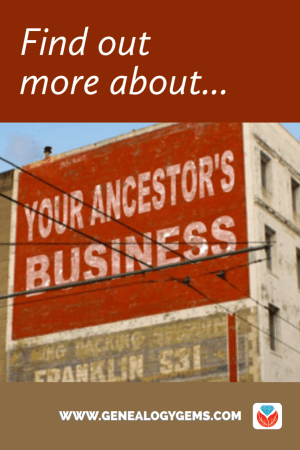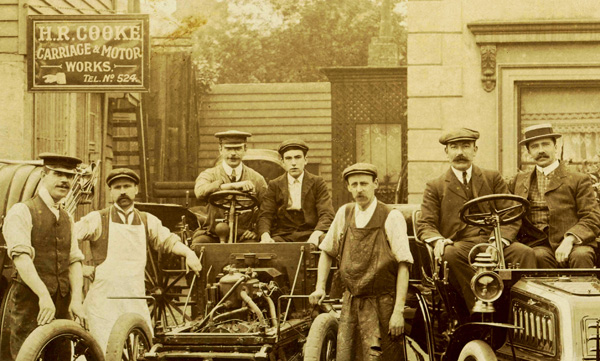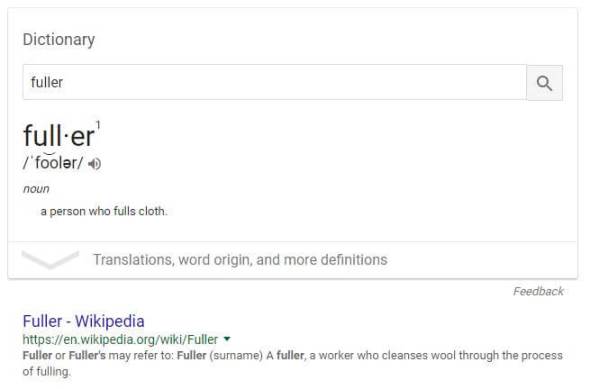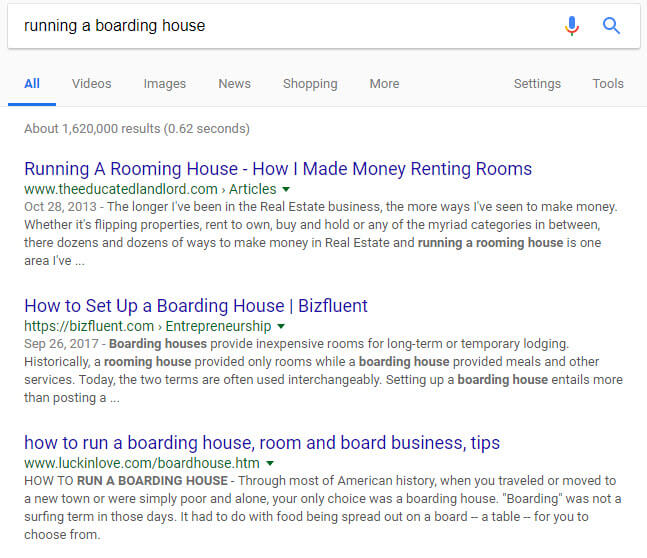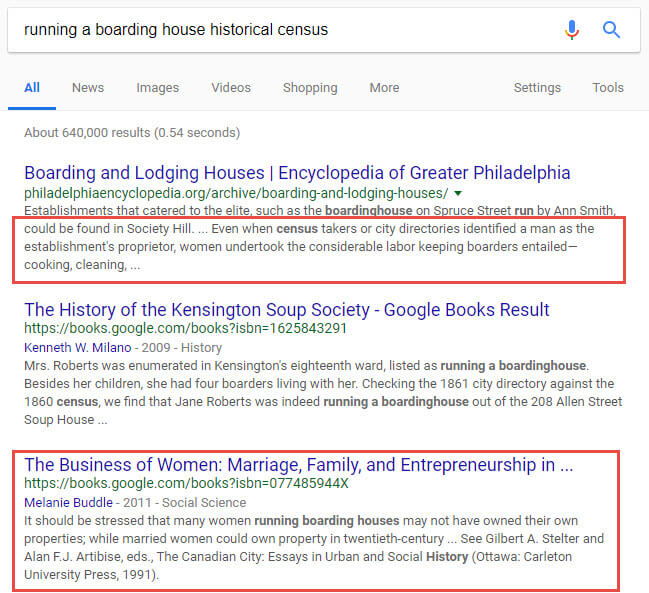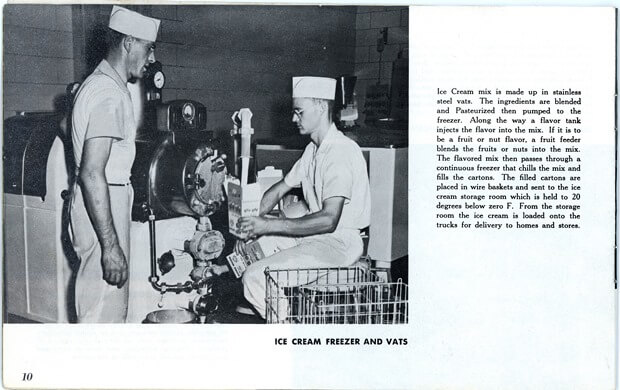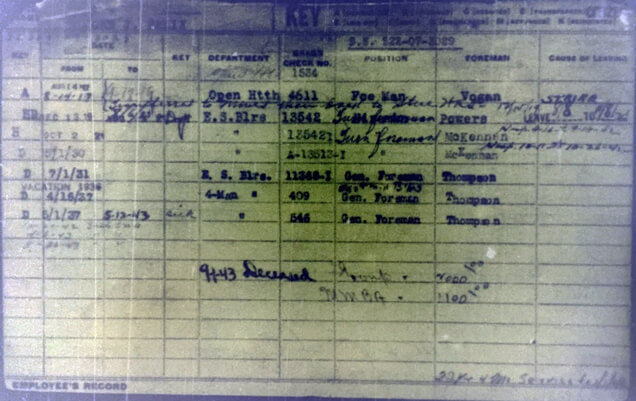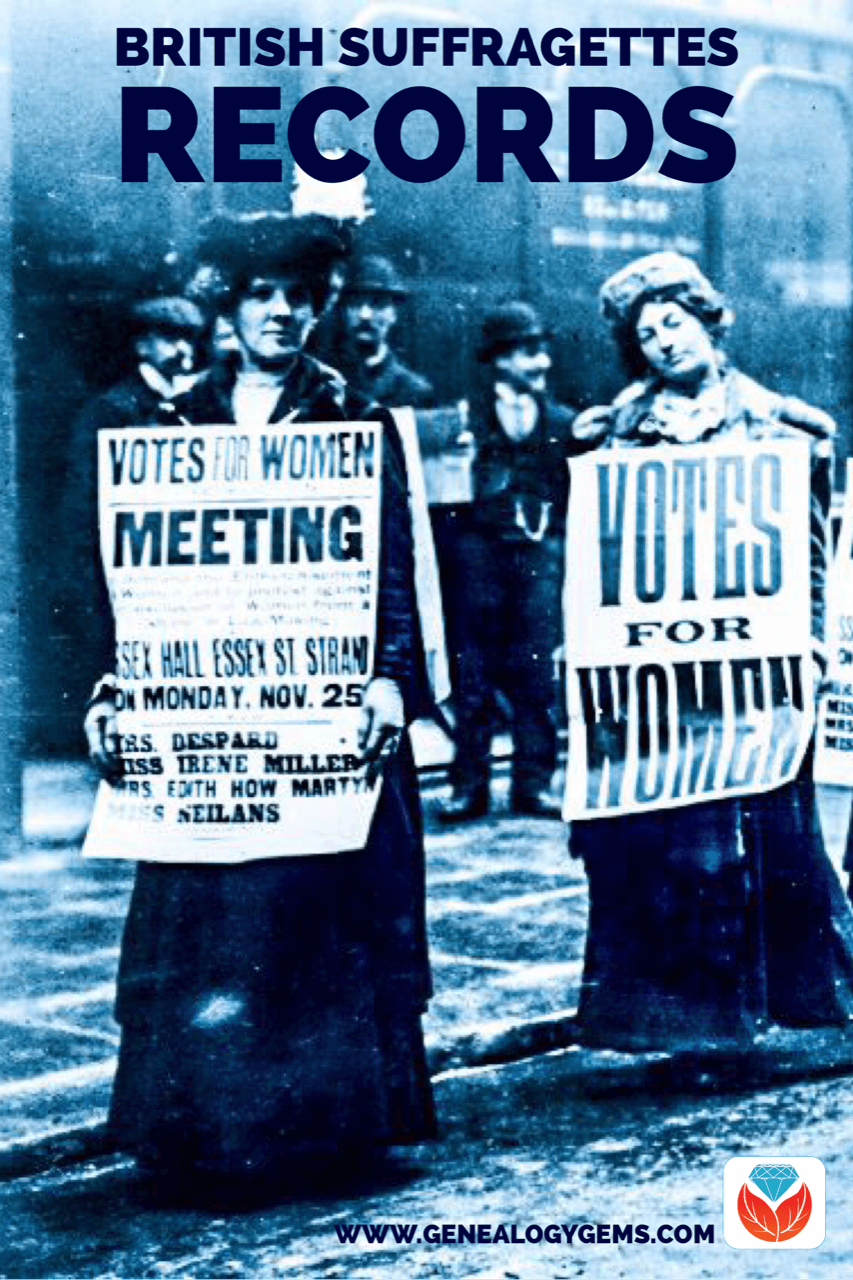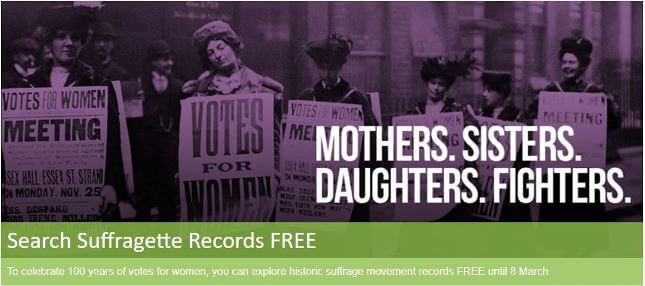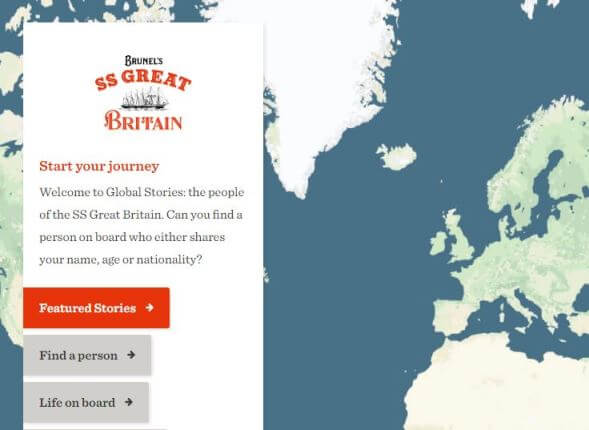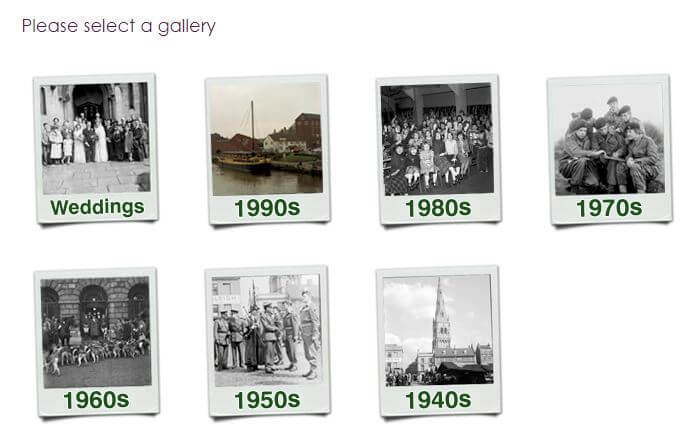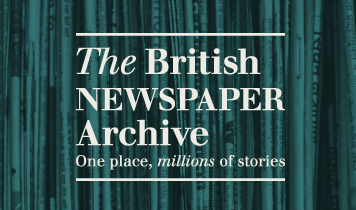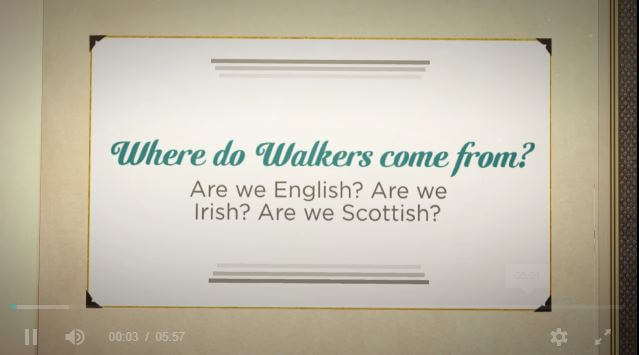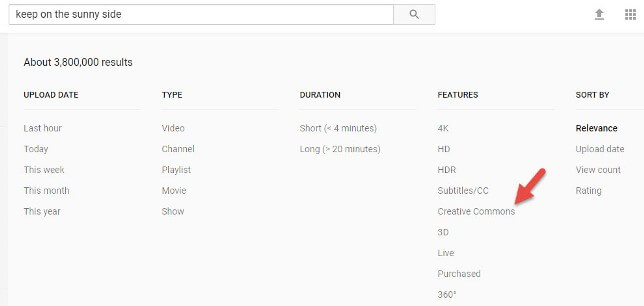Blog

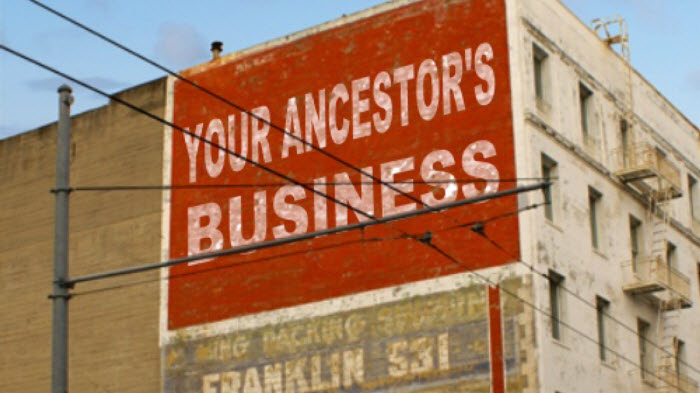
How to Research Your Ancestors’ Occupations
Tracing your ancestors’ occupations can be one of the best ways to learn more about their everyday lives, skills, financial status and even their social status. Follow these tips and record types into the working lives of your relatives to enrich your family history.
One of my favorite things to learn about my ancestors is the kind of work they did. Whether they were laborers, owned a business, worked on a farm or clerked in a store, there are often records that can tell you more about what their working conditions would have been like; what skills they likely had; and what kind of perks (or lack of) came with the job, like wealth or social status.
Not long ago I heard from Deidre, who was thinking along the same lines. She’s already explored many records that can tell you about an ancestor’s occupation, and now she wants to take things a little further:
“Hi, Lisa! I have listened to most of your podcasts…and have come across something I need some help with. I don’t remember any episodes on business owners and how to research them. I have been recently been researching a new part of the family and they were business owners. One of these family members had a taxi business in Parkersburg, WV then moved to Indianapolis (where I live) to open a restaurant in our downtown, then owned an apartment/business building and leased it out. One of his sons owned drug stores and another was a lawyer.
By using city directories I have found some information about the business, but still wondering if I might be missing more record types. I have used censuses, city directories and local newspapers so far, but are there official legal documents filed for businesses and where would I look? And were there censuses conducted for businesses that would have some detail about the business? The time period I am referring to is 1900 to 1960’s.
It seems this family were entrepreneurial types and tried a lot of business ventures. I had also thought of going down the deed record way for looking at buildings they may have bought, but wondered if these are typically stored in the same place as land deed records at the courthouse. LOTS OF QUESTIONS TO KEEP ME UP AT NIGHT! Any insight is much appreciated! Thank you so much for your show!”
Deidre’s family sounds fascinating—no wonder she wants to learn more about their work! She’s already off to a great start, having learned what kind of work they did. If you need to start from square one, turn to the same kinds of records she already has.
How to research your ancestors’ occupations
1. Identify their line of work
A host of records created about your ancestors may reveal what kind of work they did and who employed them. Census records, obituaries, marriage or death records, city directory entries, draft registration records, pension records, local or county histories: all might mention an occupation.
A photo may reveal an occupation, too. Here’s one that does: see the H.R. Cooke’s Carriage and Motor Works sign in the upper left corner of this photo? It’s from my husband’s Cooke family.
So may a notation on a local map, which might identify an ancestor’s mill, store, school, a factory or hospital that employed him, etc. Remember, our ancestors’ jobs changed over time. A young man may have progressed from a laborer in a mine to the brake man on the coal train to a shift supervisor. Relatives may have changed career paths altogether, too.
When looking through these old records, watch for the name of an employer. The name of a business is just as researchable as an industry or type of work! (More tips on researching the business below.)
2. Learn more about the trade
Depending on the time period and the trade itself, you may be able to learn various details about what the work typically involved (even if you don’t learn specifics about your ancestor’s experience).
Many terms we see in old records today apply to jobs that no longer exist. Googling an obsolete occupation may help you identify it. For example, if you Google the question, “What is a fuller?” you’ll see a definition at the top and, below that, a clickable explanation at Wikipedia. (For the sake of accuracy, you’ll want to verify that in more scholarly sources.)
I saw once on Facebook that someone was trying to figure out what an occupation was that was on a 1910 census. It turned out to be “Topper” at a Stocking Mill. I guess they added the top band to socks or stockings! (Here’s a fun article done by the folks at MyHeritage.com: 10 jobs that no longer exist. And here’s a list of now-obsolete occupations taken from a U.S. census. If your ancestor’s UK census entry is abbreviated, click here to see what that notation might mean.)
These dictionaries of obsolete occupations may help, too:
You can learn more details about historical occupations in history books and documentaries, some of which you can find online. Use smart Google search methodologies to discover what resources are right at your fingertips.
Here’s an example: Let’s say you discover from a census entry that your great-grandmother was running a boarding-house (or perhaps her husband was listed as the proprietor, but you are guessing she probably did a lot of the daily work for it). Googling the phrase running a boarding house gets you top search results about the modern practice of running a boarding house. Instead, add two more words to your search: historical and census (the latter will capture results about this occupation as it appears in the census). As you can see from this revised search, the top results are exactly the kind of thing you want to read.
Note that the second and third search results are from Google Books (the URL in the search result starts with “books.google”). The first appears to be a history book and the second an academic study. Books written by experts in their field and packed with citations are just the kinds of high-quality research sources you want to find. (Click here to learn more about using Google Books.)
Historical documentaries and old film footage can show you an occupation at work, such as mining, working on the railroad, logging, working at a textile mill, sharecrop-farming. Look for these on YouTube. For example, Contributing Editor Sunny Morton was curious after learning from a city directory that her grandmother was a telephone operator in the 1940s. What did that involve?
She went to YouTube and found some fantastic 1940s-era training videos showing operators at work. While some of these may be staged performances, with every operator smiling for the camera and doing her job in tip-top shape, they do show long rows of operators at their stations and give an idea of what their responsibilities were. Sunny could see how they were expected to dress and behave and what their daily tasks looked like. Here’s a quick example of the kinds of short training videos she found:
The idea that telephone operators handled emergency calls surprised Sunny, who grew up in the 9-1-1 era. As a young woman just past high school, Sunny’s grandmother would have been coached to respond to frantic callers and dispatch first responders. Sunny’s grandma would also have received training on how to handle different kinds of calls, such as party lines and long-distance routing through multiple switchboards.
Click here for tips on finding old film footage online. Just for inspiration and proof that this really does work, here’s a video Sunny found after following my tips: it’s her husband’s great-grandfather driving his fire engine in 1937! (Click here to read Sunny’s story about that amazing discovery.)
3: Look for any records created by or about the business itself
If your relative worked at a major factory or mill, such as The Ford Motor Company or Lowell Mill, you may find historical books, documentaries and even museum exhibits specifically about them. But smaller businesses often received a shout-out in local history books, too. So it can pay off to run Google searches with the names of family businesses (or even the type of business, such as tailor, hotel or restaurant) and the name of the town and state. (Add the word history to narrow search results.)
Here’s an example an ecstatic Genealogy Gems listener sent in. He was tipped off by an old map about a place called Todd Pond in his ancestor’s small town. His ancestors were surnamed Todd and lived right there. So he Googled Todds Pond North Attleboro and found a real gem! His family’s business was mentioned in a local history:
“In the days before electric refrigeration, North Attleborough’s homes and stores relied upon ice harvested from either Whiting’s Pond or Todd’s Pond (depicted here). By the time this 1906 photograph was taken, farmers George, Henry, James, and William Todd found selling ice more profitable than farming and founded the Oldham Ice Co.”
(For copyright reasons, we can’t show the picture here. But click here to read more about Thom’s discovery and access the book for yourself.)
Businesses themselves often created records. Stores kept ledgers. Factories and other businesses may have kept personnel records and employee pay cards. They may have published newsletters or histories. Sunny shared the following two fun examples with me:
City directories from the 1950s state that her grandfather worked at the Sinton Dairy (he was the husband of the telephone operator, who by this time was a stay-at-home mom). Among the family papers handed down to one of their children was a company brochure. A picture in the brochure shows him standing next to a vat of ice cream.
The father of the ice cream man, Sunny’s great-grandpa, worked at Colorado Fuel & Iron for most of his life. Her mom Cheryl, a professional genealogy librarian, visited the Steelworks Center of the West, which holds the records of the Colorado Fuel & Iron Company in its archive. Cheryl was able to get a copy of her grandfather’s employment application and work record. Though it’s partly illegible, this work record summarizes his dates of employment and steady progress through the ranks to become a foreman.
It’s possible you’ll find museum or archival collections like the one mentioned above by doing Google searches on the name of the company, place and industry. But you may need to search more specifically in ArchiveGrid, which is an enormous catalog of the original manuscript holdings of thousands of archives, libraries, museums and societies. Click here to learn more about using ArchiveGrid.
Now back to Deidre’s question
Deidre’s email shows she was thinking outside the box already about records that might document her family’s business, such as deeds for business properties. In addition to the above strategies, Deidre may next want to start hunting for the following:
- Local histories that may mention her family’s businesses
- Original archival records pertaining to the businesses
- Maps showing her family’s neighborhood at the time, specifically Sanborn maps, which often identified businesses and included some detailed information about properties.
Deidre specifically asked about legal documents or censuses conducted for businesses for the period 1900-1960s. The special U.S. census schedules relating to specific businesses and industries largely only exist with individual data before this time period. Legal documents would need to be researched on a case-by-case basis: it’s very possible at least one of those businesses faced lawsuits, bankruptcy or other issues that would have taken them into court. Click here to read up on researching on courthouses.
Another possibility is professional directories that could have been published specific to her relatives’ line of work. Here’s a link to an Ancestry.com wiki article on professional directories: the first category mentioned is law directories.
Finally, it might be helpful to contact the local genealogical and historical societies for the areas they lived. Often, a longtime local may know about gems that may only be on library shelves or tucked into a manuscript collection that isn’t listed in ArchiveGrid.
Learn more about ancestors’ occupations
Now that you’ve finished reading, I encourage you to go back and click on links provided to learn MORE about discovering ancestors’ occupations. If you’re ready to learn advanced online research skills (like mastering Google searching and Google Books) please consider becoming a Genealogy Gems Premium member. You’ll have access to full-length video tutorials on these topics and more–for a full year! To give you a taste of Premium, here’s a preview of my Google Books class.

About the Author: Lisa Louise Cooke
Lisa is the Producer and Host of the Genealogy Gems Podcast, an online genealogy audio show and app. She is the author of the books The Genealogist’s Google Toolbox, Mobile Genealogy, How to Find Your Family History in Newspapers, and the Google Earth for Genealogy video series, an international keynote speaker, and producer of the Family Tree Magazine Podcast.
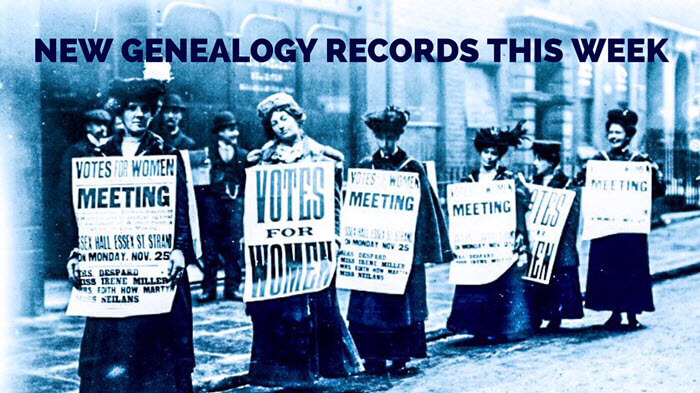
New Genealogy Records Include UK Suffragettes and Travelers’ Records
New collections about Great Britain Suffragettes and travelers on the S.S. Great Britain headline this week’s roundup of new genealogy records online. Read here about more new genealogy records for England, Scotland and Ireland: parish records, newspapers and more.
Great Britain Suffragettes Collection free until March 8
In honor of the 100th anniversary of the first phase of women’s suffrage in England, genealogy giant Findmypast.com (together with The National Archives) has launched The Suffragette Collection. This new online collection of government records, digitized from originals at Kew, “reveals the struggles endured by the movement’s most ardent supporters and highlights the State’s response as it attempted to contain them,” says a company press release.
“Researchers can expect to find photographs, cabinet office papers, calendars of prisoners and Home Office papers on suffragette disturbances and prosecutions,” says Findmypast. “The collection also includes an index of women arrested between 1906 and 1914, the official police watch list recording the details of over 1,300 militant suffragettes, reports of prison conditions, force-feeding, police surveillance and much more….The collection brings together the stories of women from all classes who actively supported women’s suffrage, either by attending demonstrations and meetings or opting for militant ‘direct action.’”
Within days of its launch, the collection also added 271 issues of The Suffragette (later The Britannia, 1912-1918). “Edited by Christabel Pankhurst, it was the official organ of the Women’s Social and Political Union (WSPU),” says Findmypast. It reported on “efforts made by the WSPU towards achieving women’s suffrage and detailing their support for the Allies during the Great War.”
S.S. Great Britain travelers and crew
You can now explore a free website with a searchable database of everyone who ever traveled on the S.S. Great Britain, both passengers and crew. Virtual exhibits on the Global Stories website also allow visitors to explore everyday life aboard the ship; what happened when people died, took ill, were hurt, or gave birth; what kinds of entertainment or discipline passengers could expect and more. You can even search departures and arrivals as the ship circumnavigated the globe 32 times and stopped at five continents between 1845 and 1970.
The Newark Advertiser Photo Archive
Thousands of images from The Newark Advertiser (UK) are now searchable online, thanks to volunteers who have been steadily digitizing and uploading images to the free Images from the Past gallery. According to a recent article in The Newark Advertiser, helpers “are working their way through thousands of old photographic negatives, some dating back to the 1940s. Because of their age, some of the negatives are becoming damaged or corroded so it is vital that they are digitized. They are also in a variety of formats, with the earliest on glass. The volunteers have worked through from the 1940s and are now nearing the 1970s.”
Newspapers
The British Newspaper Archive has recently added hundreds of thousands of digitized newspaper pages to current and newly-published titles. Here are some highlights:
- North Star and Farmer’s Chronicle, 1895-1903 and 1905-1911 (NEW title)
- Clifton Society, 1891-1892, 1894-1897, 1899-1916 (nearly 20,000 pages added) (NEW title)
- Ally Sloper’s Half Holiday, 1885-1896 (NEW title)
- Pearson’s Weekly, 1891-1911 (over 25,000 pages added) (NEW title)
- Birmingham Daily Post, 1973, 1979 (nearly 15,000 pages added)
- Neots Chronicle and Advertiser, 1855-1873, 1875-1886
- Shipping and Mercantile Gazette, 1880-1881
- Birmingham Daily Gazette, 1926, 1931
- Lloyd’s List, 1889, 1894, 1896-1897, 1904, 1906-1909 (nearly 40,000 pages added!)
- Northampton Chronicle and Echo, 1880-1882, 1884-1885, 1891, 1893-1894, 1896, 1899-1908, 1910, 1913-1915, 1918 (nearly 25,000 pages added)
- Bristol Daily Post, 1860-1864, 1867-1873, 1875 (nearly 14,000 pages added) (NEW title)
- Clifton and Redland Free Press, 1890-1895, 1898-1910, 1913-1931 (NEW title)
- West Middlesex Herald, 1855-1858, 1860-1861, 1863-1870, 1890-1895 (NEW title)
- Reading Observer, 1897-1898, 1900-1909, 1911-1914, 1921-1924 (over 12,000 pages added)
- Kinross-shire Advertiser, 1850-1852, 1879-1884, 1890, 1892, 1900-1918
- Leicester Herald, 1827-1842 (NEW title)
- The Suffragette, 1912-1918 (NEW title)
- Coventry Evening Telegraph, 1972-1979 (over 140,000 pages added!)
- West Sussex County Times, 1874, 1877-1889, 1891-1892
- Bristol Magpie, 1891, 1903, 1906-1907, 1911
- Horfield and Bishopston Record and Montepelier & District Free Press, 1899-1911, 1913-1931
- Middlesex & Surrey Express, 1887-1888, 1890-1895, 1899-1909 (over 11,000 pages added)
- Croydon Chronicle and East Surrey Advertiser, 1870, 1875-1888, 1890-1892, 1894-1896, 1898-1908, 1911 (more than 14,000 pages added)
- The Clifton & Redland Free Press, 1891-1931
England parish and probate records
The free genealogy giant, FamilySearch.org, has recently added significantly to its collections of England parish records:
- England, Derbyshire, Church of England Parish Registers, 1537-1918: Well over half a million indexed names have been added
- England, Warwickshire, Parish Registers, 1535-1984: More than 1.1 million indexed names have been added
- England, Rutland Parish Registers, 1538-1991: A new collection with over 325,000 indexed names
The subscription-access genealogy giant Ancestry.com recently published the following collections:
- Buckinghamshire, England, Extracted Church of England Parish Records, 1535-1812, a new collection with about 65,000 records.
- Wiltshire, England, Wills and Probate, 1530-1858, a new collection of over 100,000 records.
Findmypast.com has updated its collection of Devon parish records, with over 30,000 new records in Baptisms, nearly 40,000 new records in Banns and nearly 80,000 new records in Marriages, about 31,000 new records in Burials, and all of these records (and more) browsable in its image collection of Devon, Plymouth & West Devon Parish Registers.
More new genealogy records from the British Isles
Ireland. Ancestry.com has published a new collection, Clare, Ireland, Church of Ireland Baptisms, Marriages and Burials, 1744-1991, with nearly 14,000 indexed records. According to the collection description, “This collection includes baptism, marriage, and burial records from parishes in the County of Clare in Ireland, with dates ranging from 1744 to 1991.”
Scotland. Ancestry.com has published three new collections for Scotland. They are small, but if they mention your ancestors, they’re important!
Start tracing your British Isles genealogy
The British Empire once spanned the globe and had a presence on every continent. Chances are that at some point you will need to extend your research back to the British Isles. Genealogical research in the British Isles has some unique characteristics. Guest blogger Kate Eakman, a Senior Researcher for Legacy Tree Genealogists, clarifies confusing terms and helps you get your research started on solid footing. Click here to read her tips.

About the Author: Sunny Morton
Sunny is a Contributing Editor at Lisa Louise Cooke’s Genealogy Gems; her voice is often heard on the Genealogy Gems Podcast and Premium Podcasts. She’s known for her expertise on the world’s biggest family history websites (she’s the author of Genealogy Giants: Comparing the 4 Major Websites); writing personal and family histories (she also wrote Story of My Life: A Workbook for Preserving Your Legacy); and sharing her favorite reads for the Genealogy Gems Book Club.
Disclosure: This article contains affiliate links and Genealogy Gems will be compensated if you make a purchase after clicking on these links (at no additional cost to you). Thank you for supporting Genealogy Gems!

Inspiring Family History Video Ideas Sent In By YOU
These family history video ideas and comments/questions sent in by Genealogy Gems listeners can inspire your own short videos. See how they script their stories, find royalty-free music soundtracks and more. Then visualize yourself in the director’s chair—what kind of family history video do YOU want to make?
For a while now, I’ve been encouraging everyone to produce their own short family history videos. You don’t need a big budget, lots of fancy equipment or even a director’s chair (although I wouldn’t mind having one of those!). A few simple online tools, like Animoto’s do-it-yourself video platform, can help you create family history videos that are oh-so-shareable with relatives on social media. I’ve heard some great family history video ideas from you—along with an important question about finding royalty-free music.
Family history video ideas: Celebrate special birthdays
Muffy in Seattle, WA sent in the following email:
“Finally got around to listening to Episode #213 and the great story about the video y’all made to go with Tom’s poem [watch it below]. What a great idea to have him read his poem and then add pictures. Something to think about for my future videos!
This inspired me to share a video I created this past Christmas for my Dad. Trying to find out where our branch of Walkers comes from was my inspiration for starting into the very addicting world of genealogy. Unfortunately, it remains the only direct line I cannot trace across the pond. Gotta retire! Here is a link to my first video I wanted to share. Great hit with my Dad, uncle, and cousins. Maybe it will be inspiration for others to take the leap into the video world.”
Family history video question: What about music?
Melissa sent this important question about creating a soundtrack for your family history videos:
“Hello Lisa,
I have made a video using a basic subscription to Animoto and am very pleased with it. I do have a question about using music. While there are some choices on my basic subscription, I seem to have my own idea of the music I would like. In your video you mentioned to make sure the music we download is permissible.
I searched for public domain music and came up with nothing useful. Even looked on the Library of Congress Jukebox collection but it is only streamed and I think using that would not be permissible. How do I find more available and permissible music to use for the videos? My videos are just for family members and not for profit but I want to do the right thing.
I look forward to your podcasts and videos. You continue to educate me!”
Here are some tips for Melissa (and the rest of you) about finding music. First, I do use music that comes with two video-creating tools I use: Animoto (you can purchase personal subscription plans for 10% off with promocode PER10OFF) and Camtasia, which video software I use all the time (it’s a special favorite for screen-capturing my Google Earth Family History Tours).
Unfortunately, I have found free royalty-free music sites few and far between. You’re smart to be cautious because if you were to put your video on YouTube they have the technology to identify any song that is used that is a violation of copyright.
The good news is that YouTube does make free music available to you. Sign in to YouTube with your Google account, click on your picture in the upper right corner, and go to your Creator Studio. Upload your video (you can keep it private if you wish) and then on the video page click “Audio” (above the video title). There are many music tracks to choose from. Once you’ve added a track and saved it, you should be able to download the video with the music included.
An easy way to browse royalty-free music on YouTube is to filter your YouTube search results by those marked with a Creative Commons license, like this:
(Just be sure to read up on using Creative Commons material. There are still rules to follow about how to use it and how to properly credit it.)
Melissa sent this answer: “Thank you, Lisa, for your response. I did go to YouTube and found the music I wanted, “Keep on the Sunny Side,” with a Creative Commons license. My mother sang that when I was a child and she heard it from her aunt, who raised her when she was a child. It was the perfect song for the Animoto video of my mother’s memories of her mother and aunt. It was wonderful to find that song in public domain! I had no idea to look there before your response.”
Family history video ideas: Put your memories to music
Not long ago, I helped Genealogy Gems listener Tom Boyer put his own memories to music. He’d actually written his thoughts in poem form, inspired by the “Where I’m From” family history poetry initiative we shared with listeners in the free Genealogy Gems Podcast episode 185. It took Tom a while to write his own poem, but he finally sent it in. I found it so inspiring I created a video with his pictures and an audio track of him reading it. You can listen to the free Genealogy Gems Podcast episode 213, mentioned above, to hear more about how that collaboration with Tom went. Watch the video here–I think it turned out beautifully:
More family history video ideas
The Genealogy Gems website is packed with resources for helping you create beautiful family history videos and books for sharing your family history with loved ones. Try these ones:
6 tips to create family history books they can’t put down

About the Author: Lisa Louise Cooke
Lisa is the Producer and Host of the Genealogy Gems Podcast, an online genealogy audio show and app. She is the author of the books The Genealogist’s Google Toolbox, Mobile Genealogy, How to Find Your Family History in Newspapers, and the Google Earth for Genealogy video series, an international keynote speaker, and producer of the Family Tree Magazine Podcast.
Disclosure: This article contains affiliate links and Genealogy Gems will be compensated if you make a purchase after clicking on these links (at no additional cost to you). Thank you for supporting Genealogy Gems!

